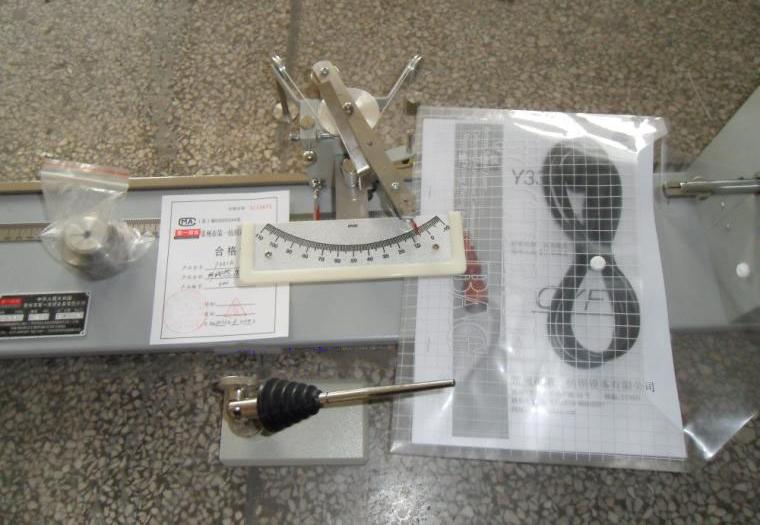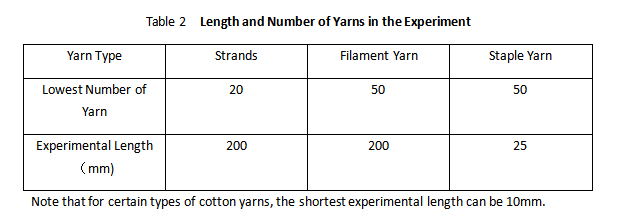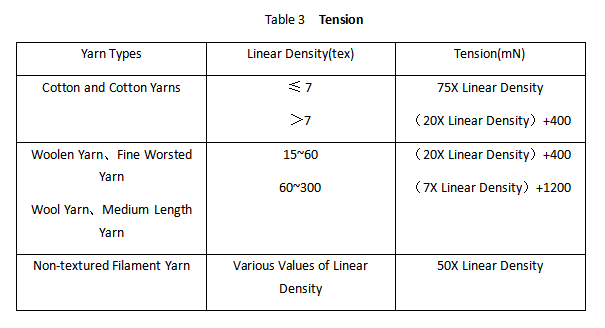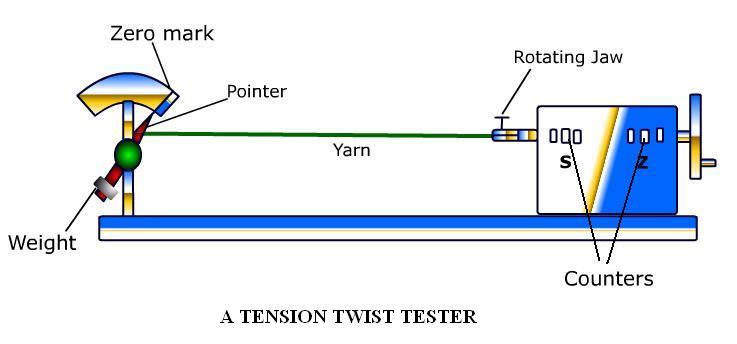
NewsInformation Center
yarn twist test method analys
2018/06/01

esting Method
1、Preparation for Specimen
Firstly, out the specimen under standard atmosphere(For non-arbitration experiment, Grade 2 standard atmosphere is applicable) for at least 16 hours. Pick 1 spline type for the longitude and 5 spline types for the latitude. The length for specimen should be at least 70~80mm longer compared to experimental length and the width should be appropriate for the number of yarns during the experiment(Table 2). For the condition of using more than 1 type of spline, the number of yarns for different combination of spline types are mostly the same. If a particular accuracy is intended, the lowest number of testing should be set according to statistics. For yarns containing sizing or other non-fiber specimens, certain preparatory works can be done for the convenience of untwisting. For printed fabric, the dyed part should be avoided.

2、yarn twist test procedure:
Unweave a yarn with the length of approximately 100mm and place it vertically. Observe the twist pattern by paying attention to the direction of the helix pattern. For the pattern same as the middle part of figure “S”, it is called the yarn twist s; For the pattern of the middle part of figure “Z”, it is called the yarn twist z.
Without causing unintentional stretching and untwisting in the yarn, Unweave the yarn by pulling it out at one end from the side of the specimen. Use the grip to fix one end of the yarn. Before fixing the other end, make sure that the yarn is under proper tension(Table 3).

Rotate the twisting grip to untwist the yarn until all the fibers of the yarn are in parallel among each other or until the all the yarns in of the strand are separated.

3、Record the number of untwisting rotation.
Weave the yarn from the specimen and repeat the previous steps until the desired number of yarns for the experiment is achieved.
If the testing of yarn twist of the yarn in the strand(Filament or Staple yarn) is required, the stretching tension can be calculated according to the linear density of the yarn; Next, adjust the tension. Remove the unwanted yarns and adjust the lengths of the yarns to be tested by referring to Table 2; Follow the steps mentioned above to carry out the test. According to the test results, calculate the longitudinal and latitudinal values of the average twist should be calculated separately (to the nearest whole number).

Previous: Cotton micronaire test analys
N e x t : what's about the difference of Fabric and Textile



